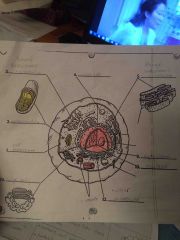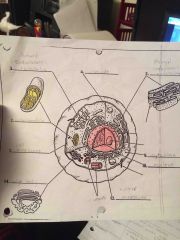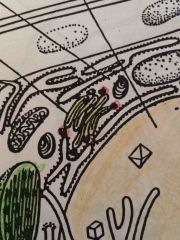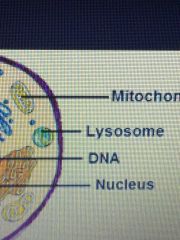![]()
![]()
![]()
Use LEFT and RIGHT arrow keys to navigate between flashcards;
Use UP and DOWN arrow keys to flip the card;
H to show hint;
A reads text to speech;
37 Cards in this Set
- Front
- Back
- 3rd side (hint)
|
Respiratory System |
Capture oxygen and exchange gases
Nose Windpipe(trachea) Lungs |
No hints |
|
|
Circulatory System |
Transports blood, nutrients and oxygen and other materials through the body
Heart Capillaries Veins Arteries |
|
|
|
Digestive System |
Takes in and breaks down food and absorbs nutrients
Mouth Esophagus Stomach Liver Pancreas Intestines
|
|
|
|
Excretory System |
Removes waste from the body
Kidneys Skin Lungs Liver Large intestine |
|
|
|
Lymphatic System |
Removes foreign bodies from the blood stream
Immunity and white blood cell production
Lymphocyte Antibody Macrophage |
|
|
|
Integumentary system |
Cover and protect body
Skin Hair Nails |
|
|
|
Nervous System |
Transmits nerve impulse between the body
Nerves Brain spinal cord |
|
|
|
Endocrine system |
Manufactures and release hormones that act with nervous system to keep body systems in balance
Pituitary glands (hormones) Adrenal glands Thyroid glands |
|
|
|
Skeletal system |
Protects and supports body
Bone Cartilage |
|
|
|
Muscular system |
Produce body movement
Muscle |
|
|
|
Reproductive system |
Carried out reproduction
Ovaries testes |
|
|
|
What are cells |
The basic unit of structure and function in living things
|
|
|
|
What are Tissues What are the 4 types of tissues |
Collection of similar cells in structure/function that work together to perform a specific job
Epithelial tissue: squamous Columnar
Nervous tissue
Muscle tissue: Smooth Skeletal Cardiac
Connective tissue |
|
|
|
What are Organs |
Structure made up of various tissue that work together to perform a specific activity for organism |
|
|
|
What are Organisms |
Entire living things that carries out all basic life process
Usually made of organ systems |
|
|
|
Cell membrane |
Control flow of material in/out of cells Protect cell |
|
|
|
Cell membrane |
Control flow of material in/out of cells Protect cell |

|
|
|
Cytoplasm |
Semi-solid, watery gel-like substance |

|
|
|
Nucleus |
Brain of the cell Contains genetic material (DNA) |

|
|
|
Nuclear membrane |
Controls flow of materials in/out of nucleas |
|
|
|
Chromatin |
DNA |
|
|
|
Vacuole |
Bag/sac that contains waste or nutrients |
|
|
|
Vacuole |
Bag/sac that contains waste or nutrients |
|
|
|
Mitochondria |
Makes energy available to cell Glucose + oxygen ~> carbon dioxide + hydrogen oxide + energy |
|
|
|
Vacuole |
Bag/sac that contains waste or nutrients |
|
|
|
Mitochondria |
Makes energy available to cell Glucose + oxygen ~> carbon dioxide + hydrogen oxide + energy |
|
|
|
Lysosome |
Digests wastes |
|
|
|
Vacuole |
Bag/sac that contains waste or nutrients |
|
|
|
Mitochondria |
Makes energy available to cell Glucose + oxygen ~> carbon dioxide + hydrogen oxide + energy |
|
|
|
Lysosome |
Digests wastes |
|
|
|
Golgi body |

Collects nutrients to be released |
|
|
|
Lysosome |

Digests wastes |
|
|
|
Endoplasmic reticulum |
Transports material through cell |
|
|
|
Cell Wall |
Provides structure and support for cell
Protects cell |
|
|
|
Cell Wall |
Provides structure and support for cell
Protects cell
Only in plants |
|
|
|
Chloroplast |
Only in plant cells
Absorbs light energy Photosynthesis takes place Carbon dioxide +hydrogen dioxide + sunlight ~> glucose + Oxygen |
|
|
|
Large Vacuole |
Only in plant cell Filled with water and stores nutrients It gives plant shape |
|

